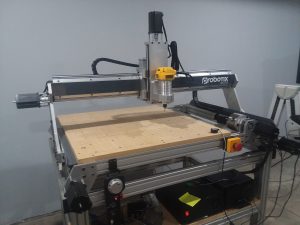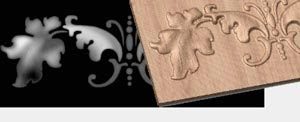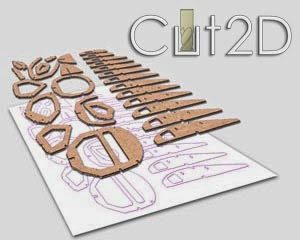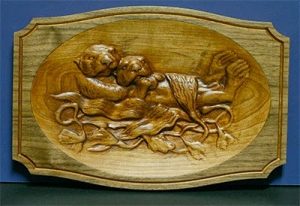When you first get into the world of CNC you often find overwhelming information that can be challenging to navigate. Contrasting each manufacturer and product is akin to comparing apples and oranges. Each product line, manufacturer, and model falls into different places on the CNC spectrum.
In this article we will breakdown the 3 primary categories of CNC Routers: Hobby, Prosumer, and Professional. Each has a set of metrics that can do a lot of the initial heavy lifting when researching a machine that is optimal for your specific needs and budget. Lets dive into the many factors that determine a machine category such as size, cost, production capabilities, options, and breakdown the pros and cons for each.
- Hobby – CNC Kits
Hobbyist kits are the least expensive type but require the most amount of experience, time, and patience. These router kits have to be assembled and calibrated and getting one up and running is a whole project by itself. Hobby CNC machine kits are best for non-commercial use and can be hit or miss when using in a production model. Understanding of electronics, mechanics, computers, and software is a must to have an efficient running machine for the desired utility. Hobby machines are not nearly as rigid or reliable as other CNC types.For the hobbyist who has time to fidget, troubleshoot, and hack away – it can be a fun activity with rewarding outcomes. Other hobbyists who lack in-depth knowledge of the mechanical, software, or both sides to a CNC machine often find kits to be frustrating and time-consuming and would opt for a more turnkey, ready to run machine. Inventables and Shapoko are a couple of brands that are popular in the hobbyist market. These kits often use cheaper components belts that can stretch and wear more than the alternative lead screw systems. The cheap plastic wheels for the linear drive mechanism in hobbyist CNCs is a disadvantage in both precision and replacement. - Prosumer
Prosumer lines of CNC machines run off of inexpensive PC based controls. They should have professional drive systems to include linear rails using ACME or ball screws. These machines are more rigid, precise, and reliable. Prosumer class CNC machines are a perfect option for small business and startups. The cost of entry is lower but you can still do high quality production work.Prosumer CNC machines also have a plethora of options the consumer can choose to customize the machine to their needs. You can often choose any spindle or router and explore additions like 4th axis, handheld jog pendants, touch-off plates, engraving lasers, CAM software, threaded inserts, and more -which is rare in the hobby or commercial/pro class CNC machines. PROBOTIX fully assembled GX machines fall in the prosumer CNC category and are used for a multitude of applications from hobby woodworking, educational and university teaching, light industrial applications, and even commercial mass production.
Shown is the PROBOTIX GX3725 – a new and improved GX series of machines matching the work envelop from our Galaxy Series Asteroid. Pictured is an installed 4th rotary axis (permanent location w/ split spoil board), MPG Jog Pendent, 1/4-20 threaded inserts plotted along a grid on the spoil board for lining up stock. The aluminum machine stand pictured here (with leveling feet – locking castors are the other option). It includes a mounted KVM arm to hold the monitor, mouse, and keyboard for convenience and aesthetics. - Professional/Commercial CNC
This class of CNC machine is the most expensive and best for larger application and companies with the capital and need to run high capacity heavy-duty industrial work. These machines run on proprietary control systems and require a higher learning curve to master the control systems. HAAS is the largest manufacturer of this class of cnc machine but bear in mind replacement parts are expensive. If your business depends on your machine running at high capacity or you can’t afford downtime when a problem occurs, you can get service calls on site but they are very expensive. Navigating the typical dealer network these class machines use can be a hassle. Typically a commercial machine requires a high dollar machinist and high level of technical skill to operate.
PROBOTIX™ is a leader in digital machining and a domestic manufacturer of fully assembled, tested, and turnkey CNC solutions – right here in the United States. Call us today at 866.492.9262 or email support@probotix.com to chat with an applications specialist to help find the right machine for your needs.



 All three of these types of software programs will export g-code that can be run on any CNC router.
All three of these types of software programs will export g-code that can be run on any CNC router.